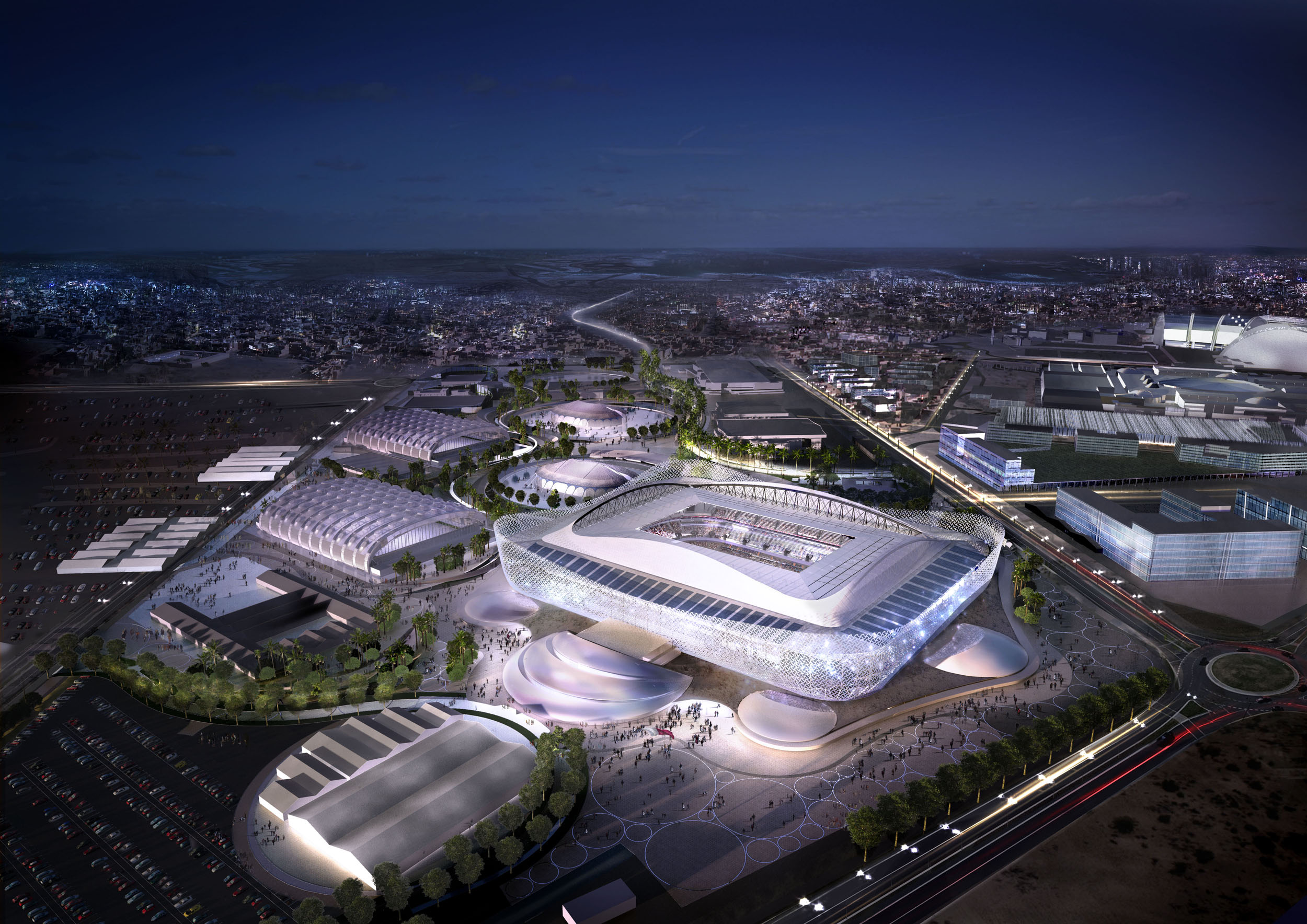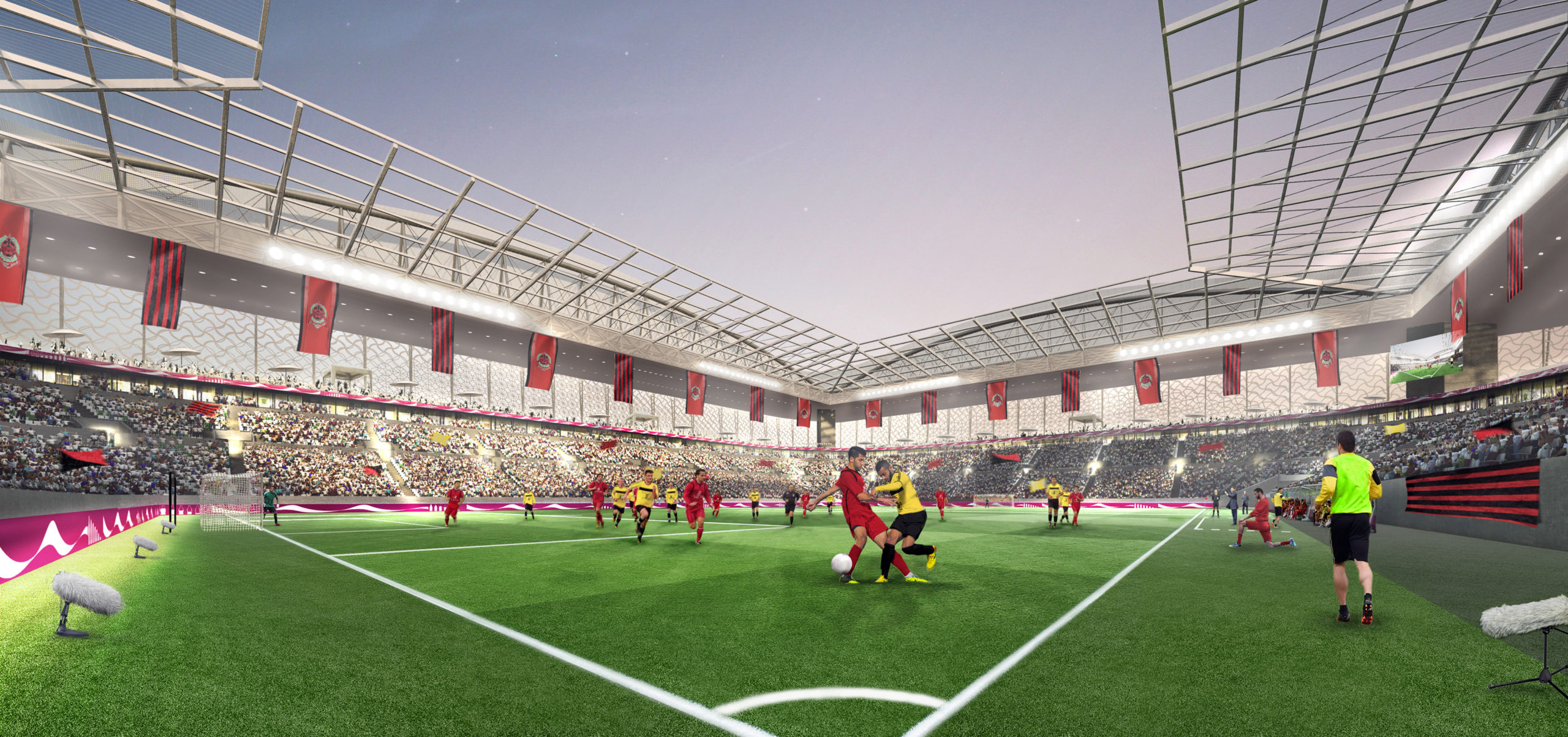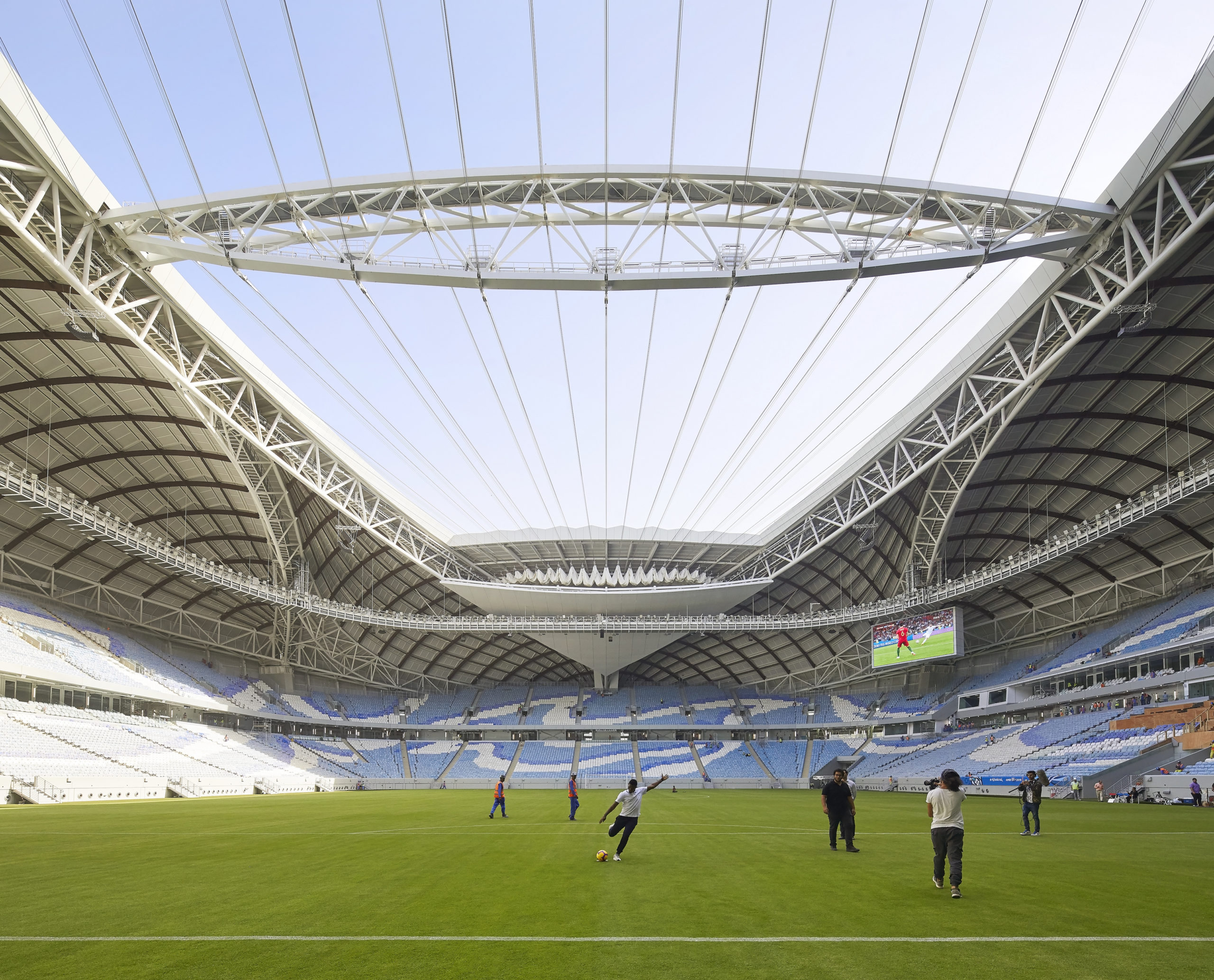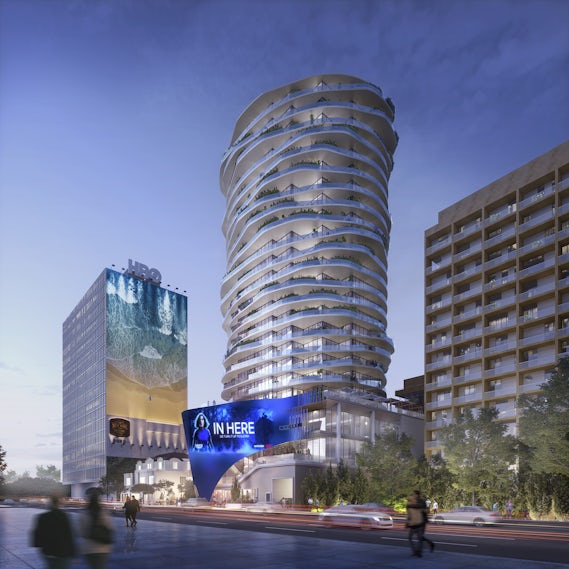Architects: Want to have your project featured? Showcase your work through Architizer and sign up for our inspirational newsletters.
As the world fervently awaits the 2022 FIFA World Cup champions, controversy continues to spark regarding the ethics of this year’s tournament. After winning the bid to host the 22nd FIFA World Cup back in 2010, Qatar has spent the last decade preparing the games and expanding its cultural offerings for the millions of visitors currently visiting the nation. From museums, national archives, stadiums and accommodations, it is reported that Qatar has spent a whopping $200 billion on World Cup preparations.
Since winning the bid, there have been 8 football stadiums built to accommodate this international soccer tournament, and some of the biggest and most established firms have been commissioned for the task, including Zaha Hadid Architects, Foster + Partners and Pattern Design. From the Al Janoub to the Al-Rayyan Stadium, there is no doubt the Qatari landscape is filled with impressive architectural feats that celebrate the nation’s culture and the international love of soccer. Not only have the stadiums been prioritized, but cultural sites like the National Museum of Qatar and upgraded transportation systems have all been constructed to prepare for the arriving guests.

Exterior view of the Al Janoub Stadium, Al Wakrah Qatar via Zaha Hadid Architects
While there are numerous architectural projects worth recognizing, it’s hard to turn a blind eye to the blatant sportswashing — when sports are used as a diversion from an entity’s wrongdoings — taking place. With every passing game, the 2022 FIFA World Cup has become an emblem of corruption. Thousands of migrant workers have lost their lives to unsafe work conditions building the FIFA program.

Exterior view of the Al Rayyan Stadium by Pattern Design, Qatar, Concept Image
Meanwhile, current visitors are being lodged in unfinished camp sites with poorly ventilated tents and unclean water. While the concern for the safety of LGBTQ + folks and women currently visiting Qatar remains strong. Numerous teams competing in the tournament have removed their “OneLove” inclusion armbands. Social media users worldwide have been asking: what message is 2022 FIFA World Cup sending to the world? In a country where homosexuality is prohibited, where women face prejudice and where labor laws are overlooked, what are fans meant to think? Does the love for the game supersede the value of life?

Interior view of the Al Rayyan Stadium by Pattern Design, Qatar, Concept Image
Furthermore, the sportswashing taking place at this year’s World Cup has spurred valuable conversation in the architecture community. Have architects contributed to this sportswashing? Architizer has been exploring the theme of ethics and architecture through our FutureFest conversation series with leading architects around the globe. Architects face the challenging task of balancing moral obligation with client requests, and most of the time, the ‘right’ thing to do is not always clear. Michel Rojkind from Rojkind Arquitectos emphasizes the importance of saying “no.” While it is not always possible economically to turn down commissions in order to take a moral stance, Rojkind reminds us that an architect’s position does not go unnoticed by society. Architects not only design, they influence and they educate.
Listen to Michel Rojkind’s Future Fest Talk
Architect’s determine their industry’s voice through the types of structures they create. And if there’s anything the 2022 FIFA World Cup has demonstrated, it is that designers must be extra prudent when working for powerful political organizations like FIFA. Rojkind reminds architects to ask themselves, “if what we’re doing in this lifetime becomes part of the solution or part of the problem? And can we design things to really come back and reconnect and have empathy to what’s going on around us.”
Top image: Interior view of the Al Janoub Stadium that features an operable roof designed by Schlaich Bergermann Partner via Zaha Hadid Architects
Architects: Want to have your project featured? Showcase your work through Architizer and sign up for our inspirational newsletters.









